The condition of sex-workers in India is extremely poor, and the industry faces several structural barriers. The existing state rehabilitation projects often violate their bodily autonomy and act as moral discipliners, leaving them vulnerable to violence. Shriya Patnaik discusses the core issues whilst also throwing light on grassroots-level movements advocating their inclusion into society.
The legal statute governing the rights of sex workers and trafficked persons in India is The Suppression of Immoral Traffic in Women and Girls Act (1956), amended in 1986 as The Immoral Traffic Prevention Act. According to this, while sex workers (also referred to as “prostitutes”) can conduct their trade in private spaces, they cannot legally solicit customers in public places nor engage in forms of pimping, hotel services or rings of sex workers: so, while prostitution per se is legal, a multitude of activities surrounding it like public solicitation, brothels, kerb-crawling, minor sexual commerce, trafficking, pimping and pandering, are illegal. Despite the existence of “Red Light” districts in cities, laws governing sex workers are somewhat vague. They are not safeguarded by labour laws or trade unions but can seek rescue and rehabilitation by national organisations. Since male prostitution is unrecognised/disallowed under Indian law, this post deals primarily with female perspectives.
Debunking Myths with Narratives
Experiential accounts from the sex industry itself debunk many of the humanitarian myths surrounding policy and developmental discourses. One such example is the Durbar Mahila Samanwaya Committee, an NGO in West Bengal that works towards identifying and challenging underlying structural factors that perpetuate social stigmatisation, material deprivation and civil society exclusion against subjects. Its social workers (many of them sex workers themselves) strive towards demanding the dignity of sexual labour, addressing of HIV and STIs infecting the community, awareness strategies and emancipation campaigns as inevitable steps towards eliminating the pervasive gender-based discrimination afflicting them. DURBAR workers also advocate for the legalisation of the sex industry in India as they believe that its clandestine nature enhances networks of crime, police brutality, and simultaneous workers’ marginalisation. Similarly, Sampada Grameen Mahila Sanstha (SANGRAM) is a rights-based, collective action NGO that promotes insider community participation as an intrinsic measure towards providing non-intrusive healthcare paradigms. It has also designed empowerment programs like the formation of Self-Help Groups, where members can collectively negotiate loans with financial institutions to fund skills development programs.
DURBAR’s film-project, Tales of the Night Fairies records the life stories of sex workers in West Bengal’s slums, together with case studies from feminist non-abolitionist NGOs, to advocate for their legal and healthcare rights. It was featured on several platforms like the Asian Film Festival in Rome, Association for Women’s Rights in DevelopmentInternational Forum in Mexico and the San Francisco Sex-worker Film Festival, thereby mobilising feminist organisations globally towards rights of sex worker. Set in Kolkata’s Sonagachi district (one of Asia’s largest Red Light districts), the interviewed workers in this documentary underscore some of their predicaments alongside debunking many myths surrounding sex work policies in India. They advocate for a recognition of the underground, informal sector industry under labour laws, along with the self-participation of workers themselves as a means of bringing about holistic change. Take for instance one woman who says: “The government is reluctant to give us labour rights. We want Self-Regulatory Boards in order to stop the entry of minor girls into the trade. New entrants will have to be scrutinised by us before they start work.” Another comments on the brutality of law enforcement agencies: “Since I joined the line, I have worked hard to earn money. I don’t beg. I don’t steal. I’m a law-abiding citizen who pays my rent and all my expenses, yet still get beaten up by the authorities. Tell me, where do we go for safety? I am very angry with the police for violating our rights, involuntarily holding us in police custody and causing our stigmatisation in society?” These stories are indicative of the need to encapsulate the lived experiences of actors in the profession, instead of an imposition of arbitrary top-down policing mechanisms that violate rights-based principles.
My ethnographic research from Odisha (reliant on the accounts of trafficked persons and some former sex workers) similarly highlights some of the limits of state welfare programs and institutional frameworks. In 2016, as part of the Davis Peace Projects Award, I had the opportunity to build a rehabilitation program for homeless and trafficked persons living on the railway stations of Cuttack and Bhubaneswar.
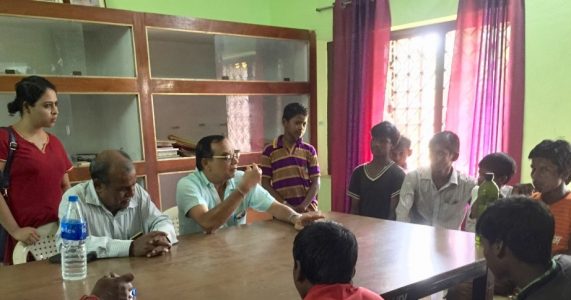
Homeless Persons, Social Workers and Healthcare Professionals at a workshop to discuss the making of Shelter Homes as part of the ‘David Projects for Peace’ initiative. © For copyright and consent information, see below.
My interviews with my subjects highlighted certain concerns. Firstly, some interviewees remarked how governmental rescue schemes were accompanied by moral policing paradigms that sought to correct their “deviant” behaviour instead of investigating the socio-economic exigencies driving them. Secondly, after being rescued, despite receiving some healthcare treatments, they objected to intrusive bodily examinations they were subject to, oftentimes without consent. They further critiqued the protectionist guise of state approaches in presenting women as helpless victims or vulnerable subjects devoid of any agency. The emotive representation of sex workers as victims duped by traffickers and devoid of any consent, while a powerful metaphor towards galvanising humanitarian support, ironically enables coercive law enforcement policies, which curtails their freedom of movement or bodily autonomy. This can also lead well-intentioned NGOs to continue the objectification, reification and re-traumatisation of rescued persons, culminating in a dangerous precedent that it is only through close regulation and surveillance in state-sanctioned shelters that women’s recovery can be achieved.
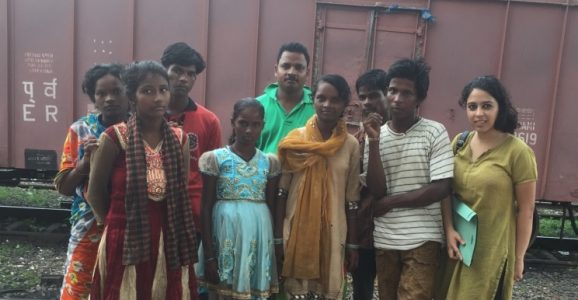
The author with homeless persons and victims of trafficking as part of the ‘Rescue, Revive and Resurrect the Dignity of Railway Station Children’ project under ‘David Projects for Peace’ Shelter Home Building Project, Odisha, 2016. © For copyright and consent information, see below.
In the implementation of the Davis Projects, women opened up to us about specific issues like menstrual hygiene, pregnancies, safe contraception, awareness of consensual intercourse, and the need for psychological counselling in cases of abuse or trauma. Finally, they posited the need for economic self-sufficiency, along with vocational training initiatives that would enable integration into the market economy, instead of rehabilitation programs that merely relied on moralistic disciplining approaches.
Centring Marginal Voices
The role of such oral histories to account for the missing voices of marginalised actors cannot be discounted. They help record complex modalities of subversive agency, resistance and mobilisation that contest mainstream development models. Additionally, as analysed by Urvashi Butalia and Veena Das, in conditions of structural violence, the recollection of suppressed silences can also serve functions of catharsis and emotional unburdening, especially for historically under-represented communities. The power of oral narratives is useful for recording the life circumstances of subaltern actors, many of which are absent from the historical record, towards reconceptualising limits to human rights protocols.
The Sex Workers Project at the Urban Justice Center is an initiative that provides legal and social services to individuals who engage in sex-work (regardless of whether they do so by choice, circumstance, or coercion) alongside takes an approach that is grounded in human rights, harm reduction along with incorporating the real life experiences of trafficked persons, towards debunking mythical representations that result in faulty interventions. Its 2009 Report surveys the problematic implications of raids on brothels and rescue operations, resulting in subsequent proceedings of punishment and forceful rehabilitation rather than a rights-based approach. It further exposes how over-sensationalised accounts result in a simplified public perception of all sex workers in binary terms of “victimised” or “deviant” subjects and the police as heroes, reinforcing existing power relations as well as disciplinary panopticons of the state. Take, for example, a woman who works as a sex worker on the side to pay for going to college. A brothel raid, instead of rescue, can become the source of her physical trauma as she is not brought into the public sphere and exposed to family and acquaintances who were unaware of her work in the first place. As stated by anthropologist Patty Kelly in her book Lydia’s Open Door: Inside Mexico’s Most Modern Brothel, “The raids on clandestine prostitutes and the control of prostitution in general are expressions of power that reinforce already existing inequalities of gender and class […] It is a way to harass poor women and men through detention and the gathering of information, and to create the illusion of the control of visible prostitution by the state.”
The Rescue-Myth narrative of the nation-state hyperbolically presents the brothel as a pervasive site of crime instead of a workplace, and can therefore erroneously present all sex work as evil, and prolong a cycle of abuse by adopting a crime-based approach to rehabilitation. Besides, it robs the woman of her agency or the desire to construct a successful and happy future for herself, devoid of the protectionist guise of the state. Post rescue, the sex worker cannot become a successful worker, carry forward with a happy relationship, or become a role model for other women. She must fit into the typified account of the psychologically damaged figure whose identity is solely marked by her former occupational role. Therefore, in controlling their bodily autonomy, the state seeks to discipline gendered minorities in establishing its pedagogical norms of citizenship as well as its control over informal economies of sexual commerce. Such policy mediations concurrently disregard complexities in situational factors and legitimise a punitive policing mechanism that merely projects the brothel as a site of crime, thus disregarding other forms of informal sexual commerce in private sites. The experiential narratives of women showcase how under the guise of welfare programs, such exclusionary models, can become complicit in the criminalization and human rights deprivation of socially marginalised groups.
Analogously, as studied by Svati Shah in Street Corner Secrets: Sex, Work, and Migration in the City of Mumbai, the urban “pull” factor of cities facilitates an exodus of rural migrant workers with limited education and skills sets who, finding no better financial prospects, get dragged into indentured labour and/or sex work as a survival strategy, especially in slum localities like Mumbai’s Kamathipura district. One needs to deconstruct the violent politics of sexual regulation, especially as the local police sporadically harasses sex workers towards protecting respectable residential localities, in tandem with Real Estate agents who are sanctioned to arbitrarily check the residential quarters of suspects. In the name of welfare and protection projects, state authorities consequently become complicit in the criminalisation and human rights deprivation of disenfranchised actors. Subsequently, sex workers’ participation in civil society is highly restricted vis-à-vis barriers to workplace opportunities, upward socio-economic mobility, healthcare coverage, and/or labour laws through which inequalities are naturalised, normalised and institutionalised.
Integrating Experience into Policy
In light of the limitations of the above-mentioned trafficking and sex work frameworks, Anne Gallagher (Trafficking Adviser to the UN High Commissioner for Human Rights and former-manager of OHCHR’s Anti-trafficking Program) and Elaine Pearson (from Human Rights Watch), instead hypothesise the merits of a bottom-up, inclusive approach of integrating individual voices and experiential accounts. This would lead to better prevention, interception, rehabilitation and integration efforts. In their 2008 Policy Report on the limits of institutional shelters, they discuss how it is this experiential aspect that has been rendered moot in most regional and national efforts. In suggesting improvements to the international legal regime surrounding trafficking and sex work, they further underscore how it is imperative that human rights protocols by nations should not discipline adult consensual prostitution at the risk of minimising rights-based principles. Some of these principles are: a lack of gendered discrimination upon rehabilitation; the rights of shelter detainees to dignity; legal counsel; autonomy of movement; adequate healthcare including counseling and psychological services; and Monitoring & Evaluation mechanisms free from political interference.
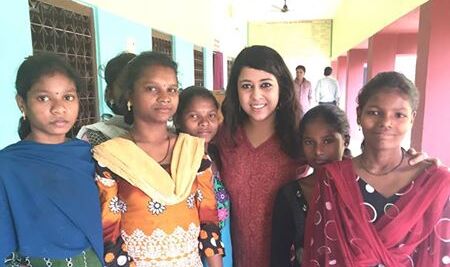
The author with minor victims of trafficking rehabilitated as part of ‘Rescue, Revive and Resurrect the Dignity of Railway Station Children’ project under the ‘David Projects for Peace’ initiative, Odisha, 2016. © For copyright and consent and consent information, see below.
In conclusion, then, though India has had periods of economic growth, modernisation, scientific and technological advancements, and macro-level peace initiatives since independence, its institutional structures have not comprehensively addressed micro-level development and the concerns of its most disadvantaged segments. Therefore, India’s sex workers, though constituting an integral part of its informal sector economy, are rendered voiceless under patriarchal power structures. Notwithstanding a lack of labour rights and healthcare coverage, their life histories remain invisible from the realm of law or policy. Although the struggles of analogous disenfranchised groups challenge dominant notions of development, sex workers remain largely excluded from mainstream society, but there is an urgent need to pay attention to such voices.
© All photographs Shriya Patnaik. Consent to publish these photographs is with the author.
This article gives the views of the author, and not the position of the South Asia @ LSE blog, nor the London School of Economics and Political Science.




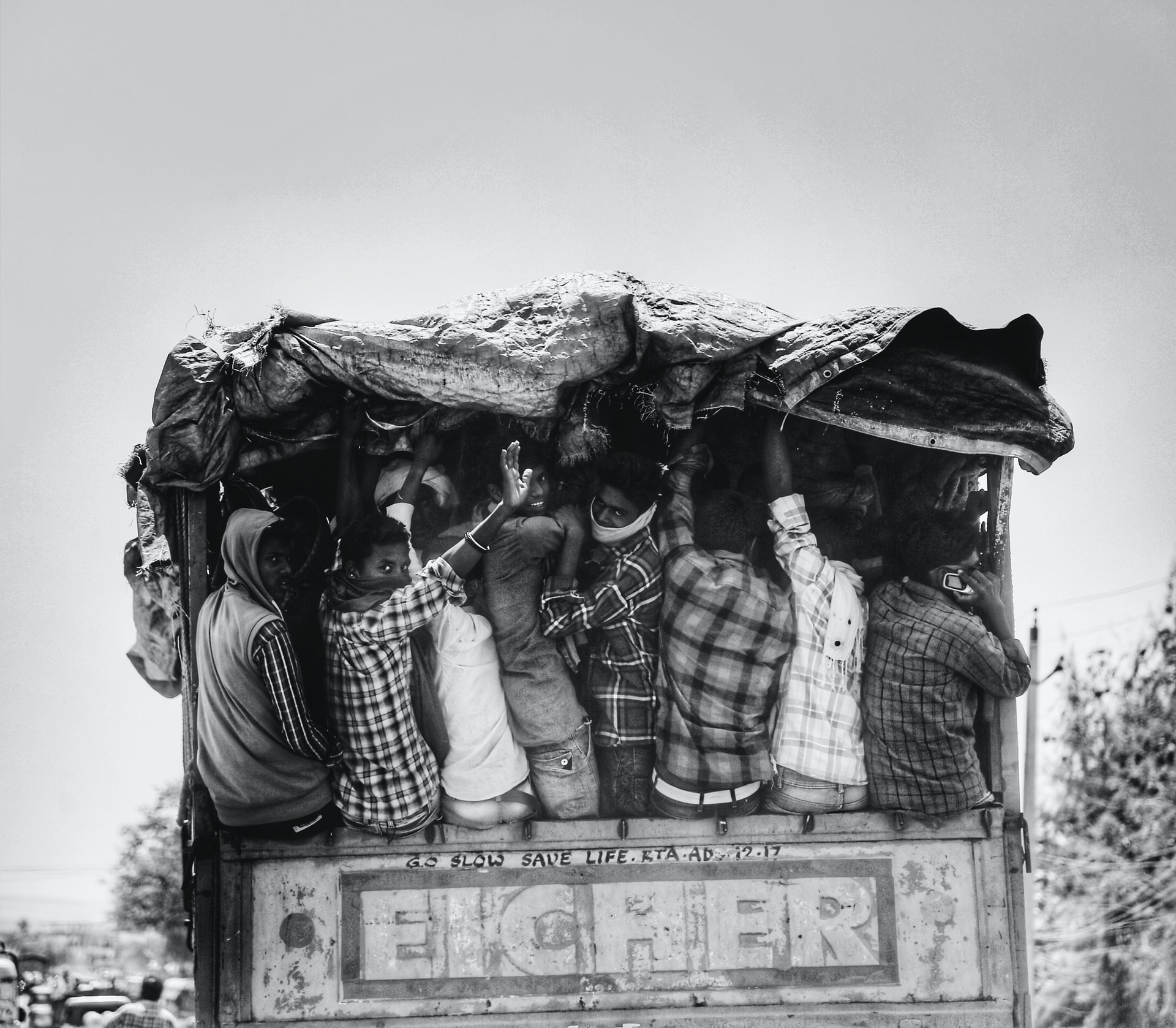
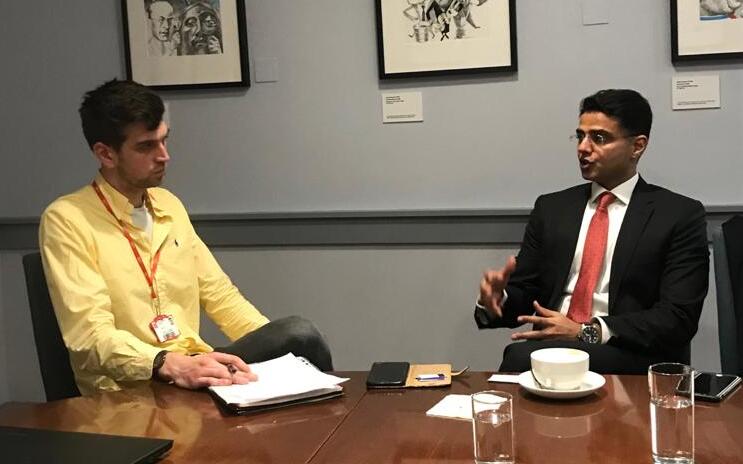


Very good write up.
well explain amazing post